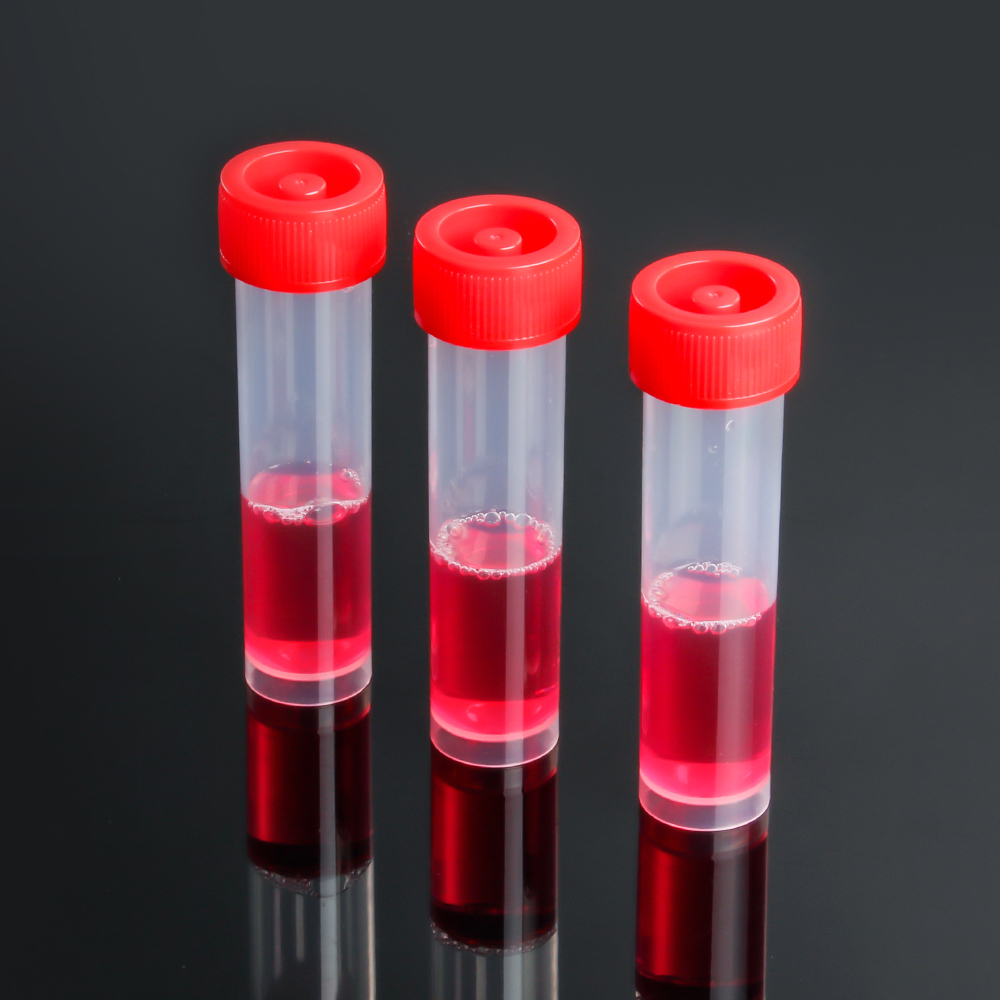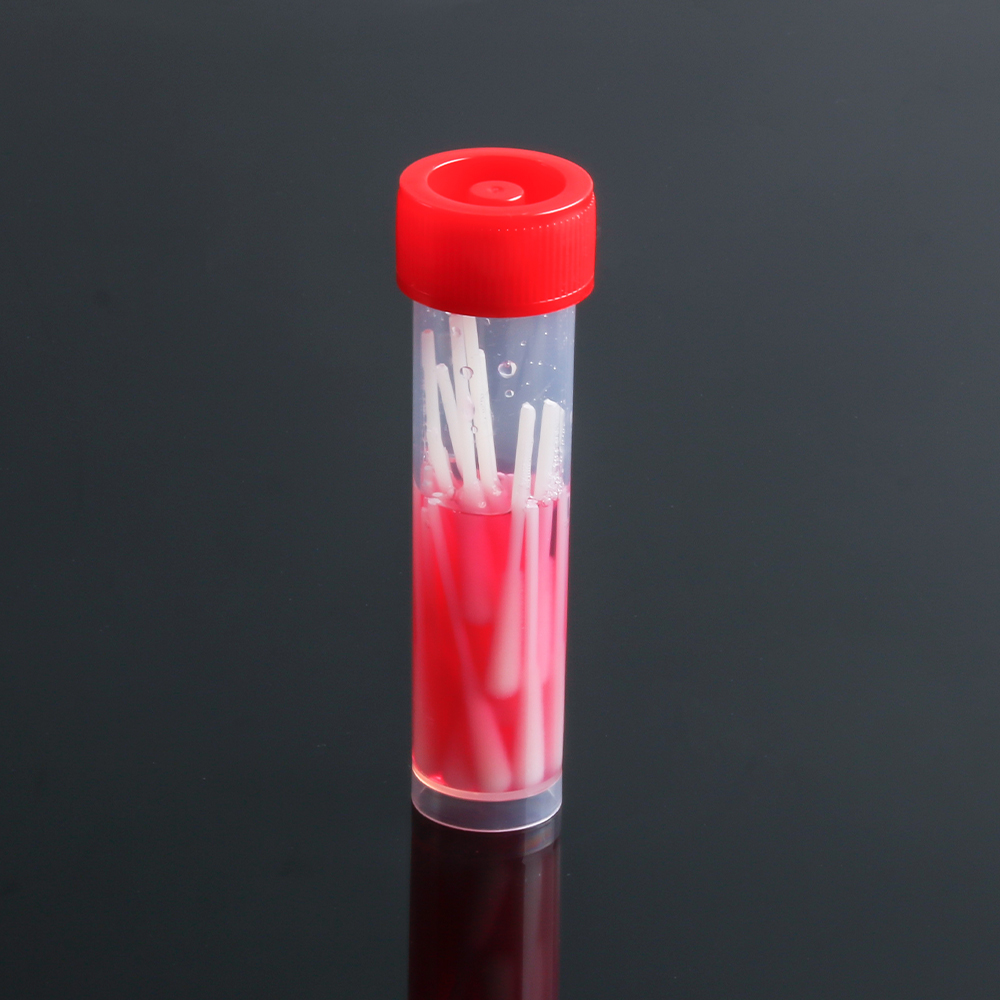For the pre-nucleic acid testing phase, the most important consumable is the sampling tube, or more specifically, it can be broken down into three parts: the virus preservation solution, the sampling tube body and the sampling swab. The sampling position deviation, insufficient amount of virus, sampling irregularities, and damaged samples are all causes of false negative results, so let's talk about how to choose the right sampling products for your lab to ensure the validity of your samples and reduce the risk of incorrect results!
Sampling tube body
Sampling tube as a sampling container, should be selected from the perspective of sealing, ease of use, etc.
1. Effective sealing. Tube cap and tube body should be made to fit, as far as possible, choose the spiral mouth rather than plug-in type, to avoid the situation of leakage, resulting in pollution as well as the risk of infection.
2、Wide temperature tolerance range. As the new coronavirus detection requires 56 ° C inactivation and ice bath operation process, so the requirement for good sealing, high and low temperature resistance, will not be deformed and broken, and can adapt to a variety of inactivation methods.
3、Easy to operate. Cap and tube body should be a moderate degree of fit, should not be too tight, so that sampling, testing personnel can normally open and close the cap with one hand, to enhance operational efficiency.
4, the tube body transparent, easy to observe. So that the operator can observe the sampling tube swab and the location of the preservation fluid, to take the corresponding processing program.
5、The diameter of the tube is suitable. The diameter of the sampling tube is recommended between 15-30mm, depending on the actual test tube rack used in the testing laboratory, the sampling tube placed into the test tube rack will not be too loose and easy to fall, and will not be too tight because of the jam is not easy to plug and unplug and affect work efficiency.
6、The wall of the tube is smooth and flat, and the label is complete, firm and clearly written. When sampling can be smoothly written information, if you need to paste barcode, etc. can easily fit, not easy to fall off the corner.
7、The tube cap is flat. If the laboratory in the testing process needs to paste the label on the cap flow number, etc., can facilitate the operation.
8、The bottom can be upright. So that the sampling tube can stand on the plane is not easy to fall, if the entire use of the test tube rack to place the sampling tube can not be required in this regard.
Sampling swab
Sampling swab is the first direct contact with the patient, the patient and the sampling experience will have a lot of impact, unsuitable materials may even directly affect the results of the test.
1, sterile flocked swab head. Sterile flocking can maximize the sample collection, no toxic effect on pathogens and contact with the cellular tissue, does not affect the subsequent detection. Calcium alginate sponge and cotton has a strong adsorption effect on protein, not easy to elute, will have an impact on the subsequent detection.
2, the length of the swab should not be too short. Swab length is recommended in 18cm up and down, too long swab easy to shake inconvenience; too short swab will make the sampler easy to contact the subject body fluids increase the risk of infection.
3, swab handle material is easy to break. The material of the swab handle is recommended to use hollow polystyrene (PS) plastic rod, not wooden sticks or bamboo sticks and other materials, because wooden sticks or bamboo sticks and other materials are also easy to adsorb protein. A material that breaks easily helps the sampler to retain the appropriate length of swab handle to avoid leakage due to the cap being unable to close the tube because of the length of the rod handle inside the tube.
Virus Preservation Solution
BofA Innovations has developed and produced the Virus Nucleic Acid Preservation Solution, which is used to maintain the stability of nucleic acid components in samples and transfer them safely to the laboratory at room temperature, effectively solving the problems of sample transportation, inactivation and preservation of nucleic acid components before molecular diagnostic analysis, providing sample source protection for nucleic acid testing to confirm the diagnosis of novel coronavirus infection
1. Stabilize nucleic acid components (including RNA, mRNA, DNA, etc.) in samples
2. Rapid inactivation of various types of viruses, bacteria and other microorganisms (including Mycobacterium)
3. Inactivate nucleases and proteases to protect nucleic acid components
4. Preserve human, animal, plant, environmental and forensic samples, etc.
5. Preserve different types of samples including blood, body fluids, swabs, tissues, etc.
6. The RNA component of the sample can be stored stably at room temperature for 7 days
7. Meet the different requirements of molecular testing and gene sequencing
8. No need for cold chain transportation
Translated with www.DeepL.com/Translator (free version)


